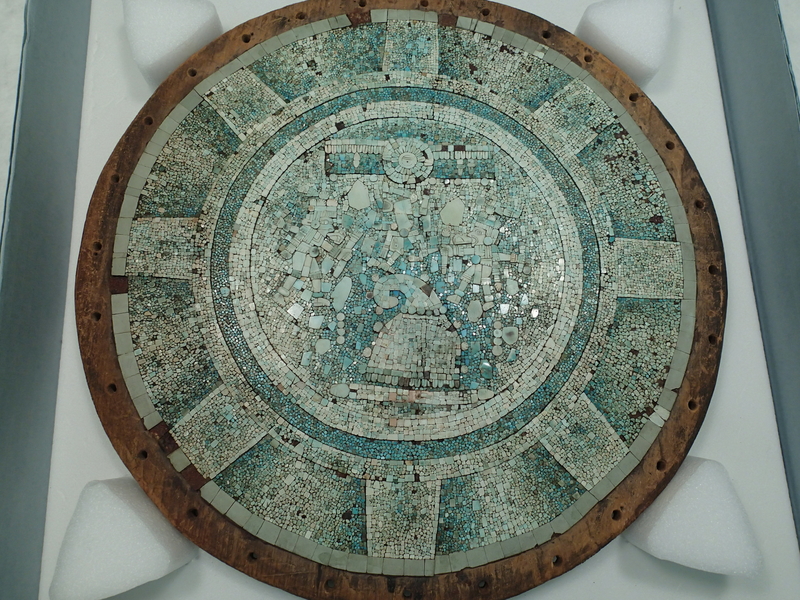Turquoise used by Native societies in Mexico did not come from the American Southwest as previously thought, according to a
study published in Science Advances this week.
Researchers from Dickinson College and University of Arizona tested 38 turquoise tiles from Tenochtitlan, the capital of the Aztec empire. They also tested Mixtec tiles from the collection of the National Museum of the American Indian.
The results were surprising to the study team. Lead author Alyson Thibodeau said the isotopic signature of the tiles indicate they came from a more local source, not from known turquoise mines in Arizona, New Mexico and other parts of the American Southwest.
"These findings potentially reshape our understanding of both the nature and extent of long-distance contacts between Mesoamerican and Southwestern societies," Thibodeau said in a
press release. "I hope this inspires people to be skeptical of claims."
The researchers do not know for sure where the Mesoamerican turquoise came from, since there aren't any known mines near Tenochtitlan, which was the capital of the Aztec empire and is now home to Mexico City. But they believe nearby copper deposits could have been the source, The New York Times reported.
Turquoise is a copper mineral, found adjacent to copper ore deposits, according to an
October 2017 study that examined a mine on the homelands of the
White Mountain Apache Tribe in Arizona.
Read More on the Story:
Aztec Turquoise Tiles May Solve a Mesoamerican Mystery
(The New York Times June 13, 2018)
New study rethinks pre-Columbian turquoise trade
(Ars Technica June 14, 2018)
Where Did the Aztecs Get Their Turquoise?
(Smithsonian.Com June 15, 2018)
Join the Conversation

